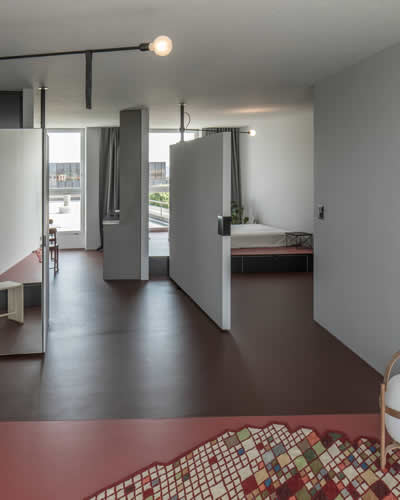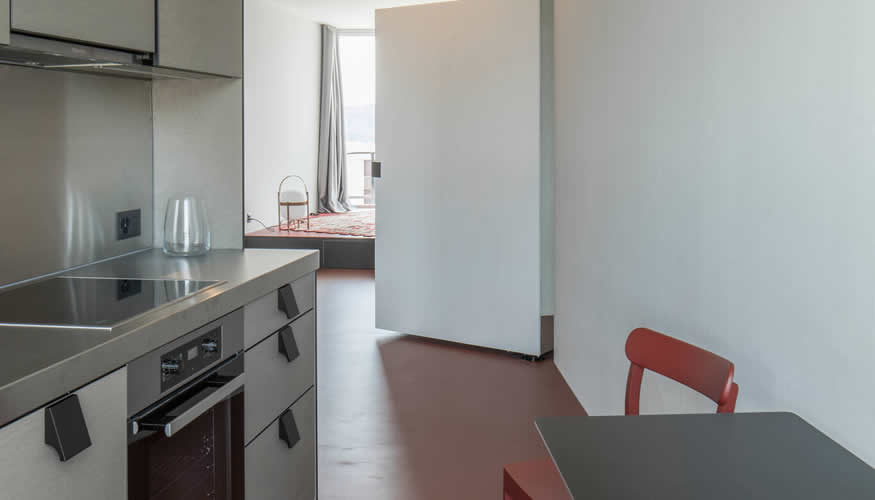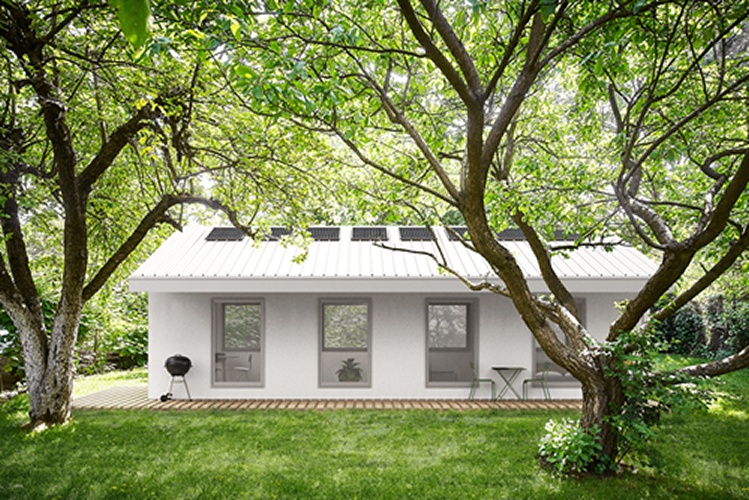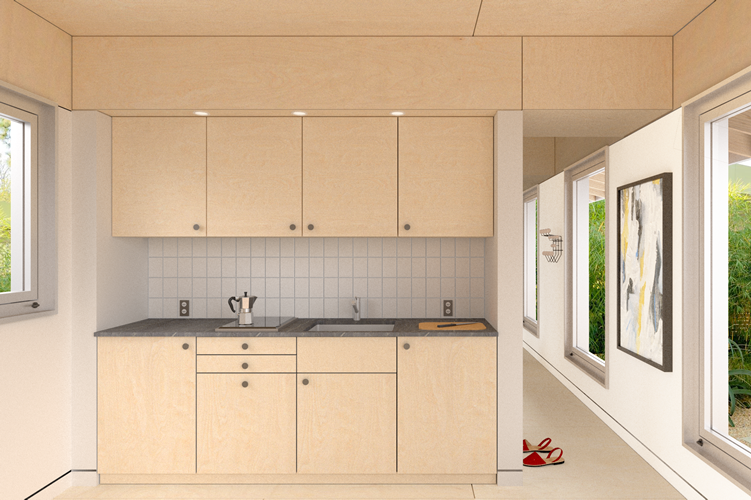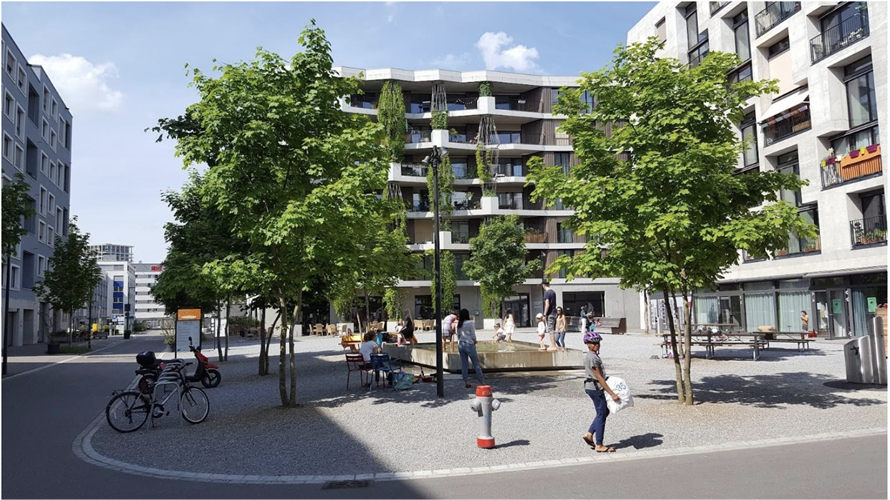READINGS / RESOURCES
A starting point of diverse books and articles to explore this year’s Berkeley Prize topic.
(Social and behavioral factors in design studies)
Revisiting “Social Factors:” Advancing Research into People and Place, edited by Georgia Lindsay and Lusi Morhayim, Cambridge Scholars Publishing, 2015.
The Routledge Companion to Architecture and Social Engagement, edited by Farhan Karim, 2020.
Architecture and the Social Sciences: Inter- and Multidisciplinary Approaches between Society and Space, by Maria Manuela Mendes (Editor), Teresa Sá (Editor), João Cabral (Editor), 2017.
Architectural Research Methods, Second Edition, by Linda N. Groat and Daving Wang, 2013.
“New Research: The Built Environment Impacts Our Health and Happiness More Than We Know.” by Jared Green
(Case studies)
Easter Hill Village: Some Social Implications of Design, by Clare C. Cooper, 1975. This seminal book and its underlying research is explored in an exhibition at U.C. Berkeley: “Teaching Design With People in Mind: Social Factors at the College of Environmental Design.”
Richmond Village: 28-Acre Housing Development in Richmond. A short description of the rebuilding of the 1954 Easter Hill Village in 2006.
“When the Best Laid Plans Go Awry: What Went Wrong with New Orleans' Make It Right Homes?” by Rob Walker, Archdaily.com, 12 March 2019.
“How Social Factors Affect the Design of New Urban Residence” by Ke Xie and Hui Shen, 2015
“Influence of Socio-Cultural Factors on the Formation of Architectural Spaces (Case Study: Historical Residential Houses in Iran),” by Reza Askarizad in Creative City Design: A Journal of Urban Planning & Design and Architecture Vol.1/No3/Autumn 2017.
“Social Architecture: Urban signature architects.” 150 social architecture ideas in 2021 on Pinterest.
(The Co-Housing Option)
“These Architects Believe Communal Living is the Way of the Future,” by Jacqui Palumbo, CNN, 28 May 2021.
“How Will We Live Together?” Installation at La Biennale di Venezia, 2021, by Anne Kockelkorn (Germany) and Susanne Schindler (Switzerland)
“Site Planning, Building Design and a Sense of Community: An analysis of six cohousing schemes in Denmark, Sweden and the Netherlands,” by Clare C. Cooper Journal of Architectural and Planning Research, June 2000,146-163
Note: The theme of the Journal of Architectural and Planning Research, Summer, 2000 issue (Vol. 17, No.2) is “Cohousing.” See the table of contents for the full list of relevant articles at: https://www.jstor.org/stable/i40117320
|
|
|
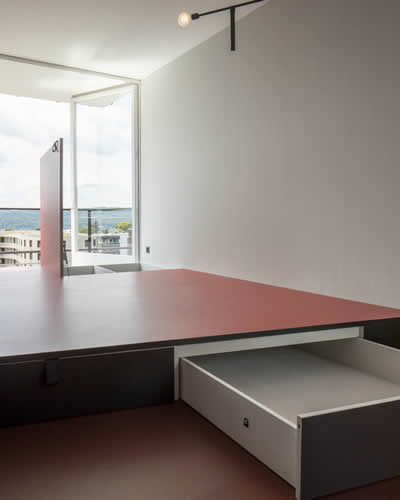 Elli Mosayebi, Edelaar Mosayebi Inderbitzin Architects (BP2022 Juror): vacancy – no vacancy project. "The two built-in platforms contain numerous storage compartments for personal belongings." (See Essay Question: Introductions by jurors.)
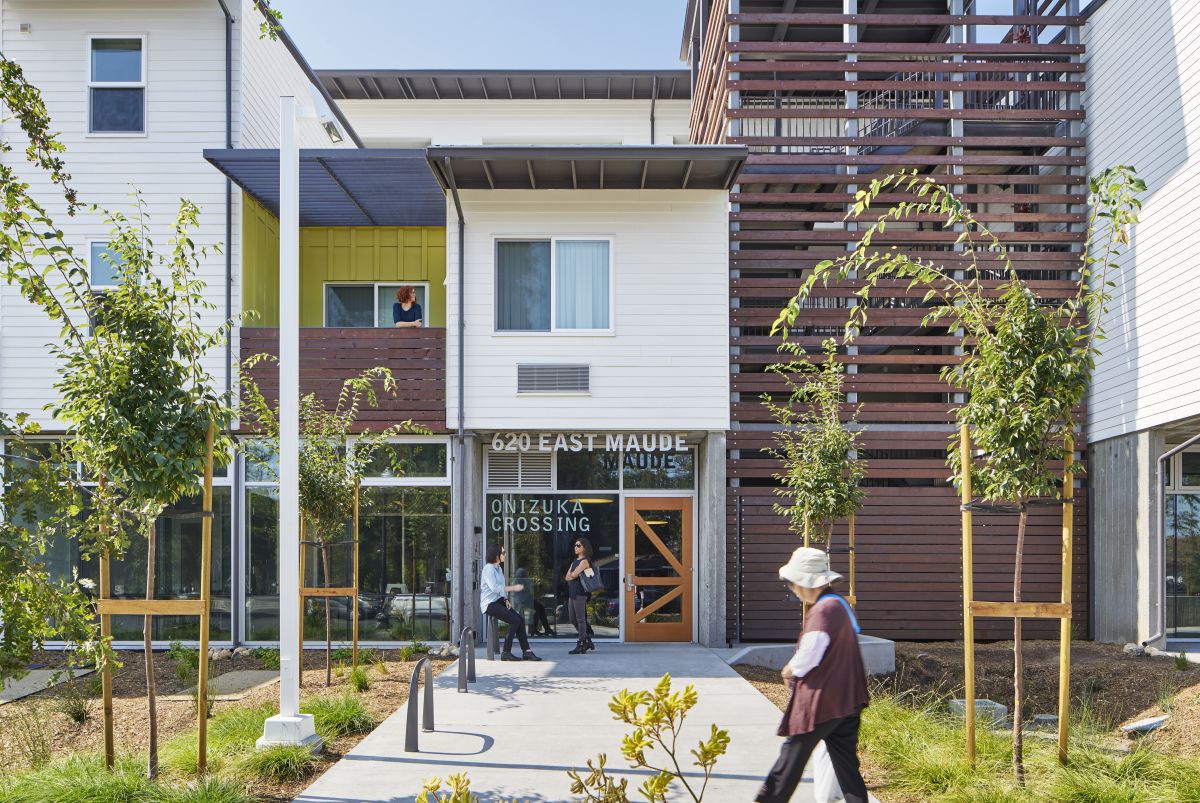 Onizuka Crossing Housing, David Baker Architects, San Francisco, 2016. The result of a partnership between MidPen Housing and the City of Sunnyvale, California, U.S.A., Onizuka Crossing provides 58 low-income working families with new, affordable rental homes in Sunnyvale, the heart of the Silicon Valley. Twenty-nine units are reserved for formerly homeless individuals and their families. (See: https://www.dbarchitect.com/project_detail/178/Onizuka%20Crossing%20Family%20Housing.html) Photo credit: ©Bruce Damonte.from DBArchitect.com.
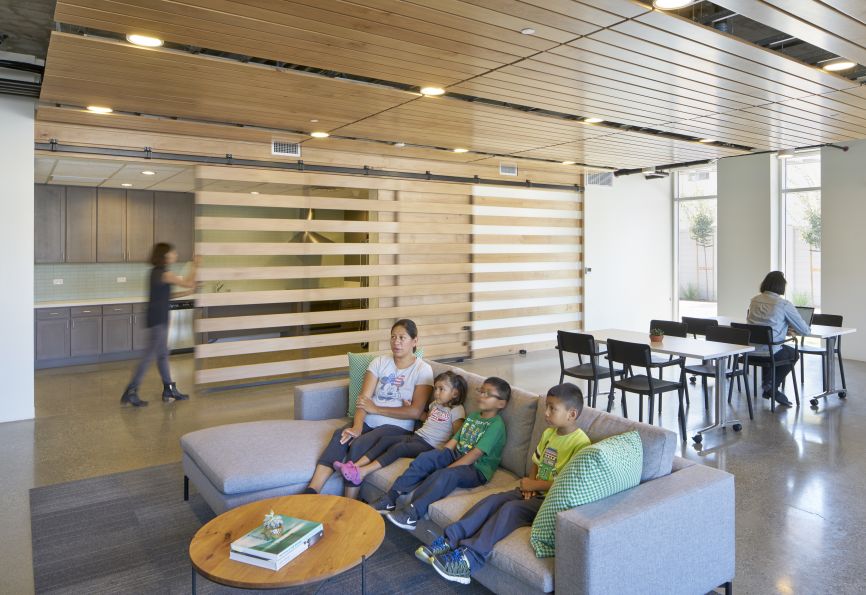 Onizuka Crossing Housing, David Baker Architects, 2016. "Former homeless residents receive extensive supportive services in collaboration with the Santa Clara County Department of Behavioral Health and the U.S. Veterans Administration Palo Alto Healthcare System... Onizuka Crossing is a prime example of infill development, transforming a U.S. National Guard armory building into supportive, permanent affordable housing." (See: https://www.dbarchitect.com/project_detail/178/Onizuka%20Crossing%20Family%20Housing.html) Photo credit: ©Bruce Damonte from DBArchitect.com.
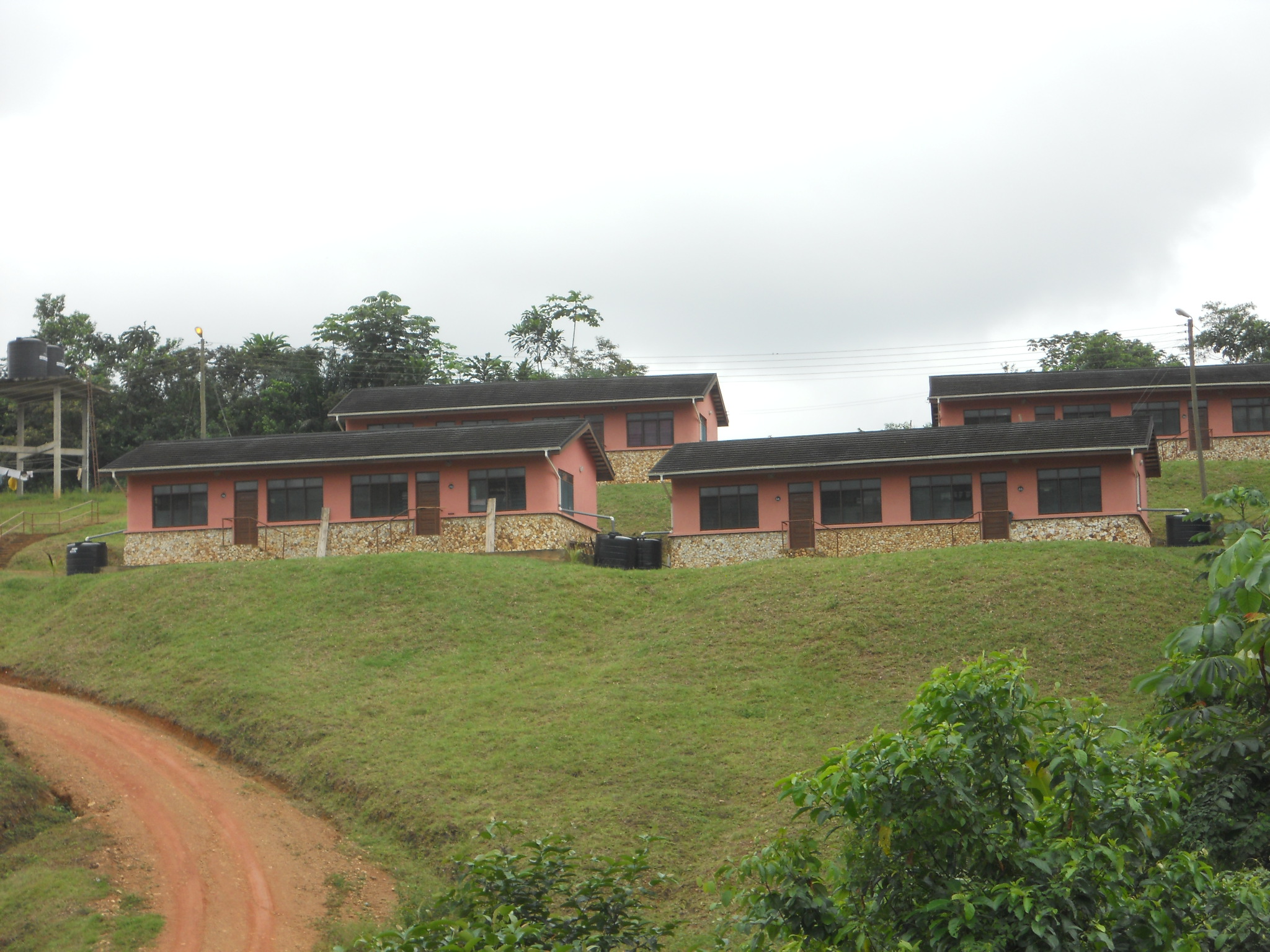 S. Tetteh + Associates Architects, Accra, Ghana. Low-cost housing project for rangers and conservation staff at the Bia and Ankasa Reserves, Juabeso-Bia district, southwest Ghana.
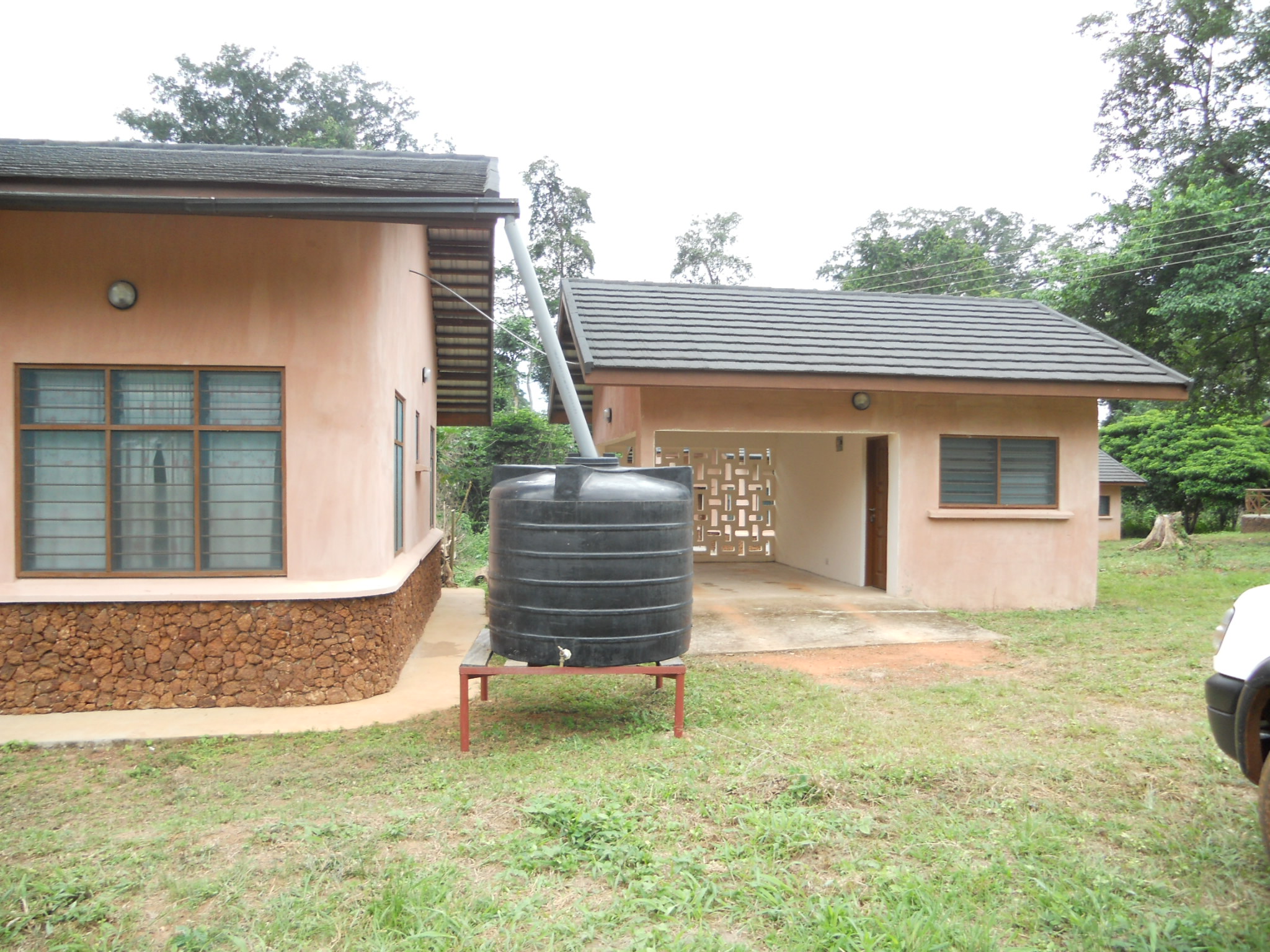 S. Tetteh + Associates Architects, Accra, Ghana. Low-cost housing project for rangers and conservation staff at the Bia and Ankasa Reserves, Juabeso-Bia district, southwest Ghana.  Fondazione Housing Sociale, Milan, Italy: The Housing Foundation developed a class to help future residents form a collaborative community in their housing development. Research by Dorit Fromm, Writer, Architect, BP2022 Juror: (See Essay Question: Introductions by jurors.)
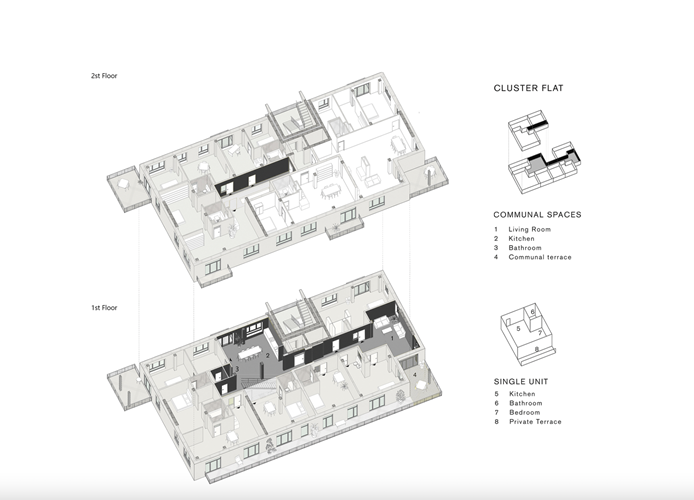 From the manual "Starting Up Communities, A Design Kit for Collaborative Housing," Fondazione Housing Sociale, Milan, Italy. Research by Dorit Fromm, Author, Architect, BP2022 Juror: (See Essay Question: Introductions by jurors.)
 Mehr als Wohnen, Switzerland: Childcare and afterschool care are located on the ground floor level of the housing, as well as a café and other neighborhood services. Research by Dorit Fromm, Author, Architect, BP2022 Juror: (See Essay Question: Introductions by jurors.)
 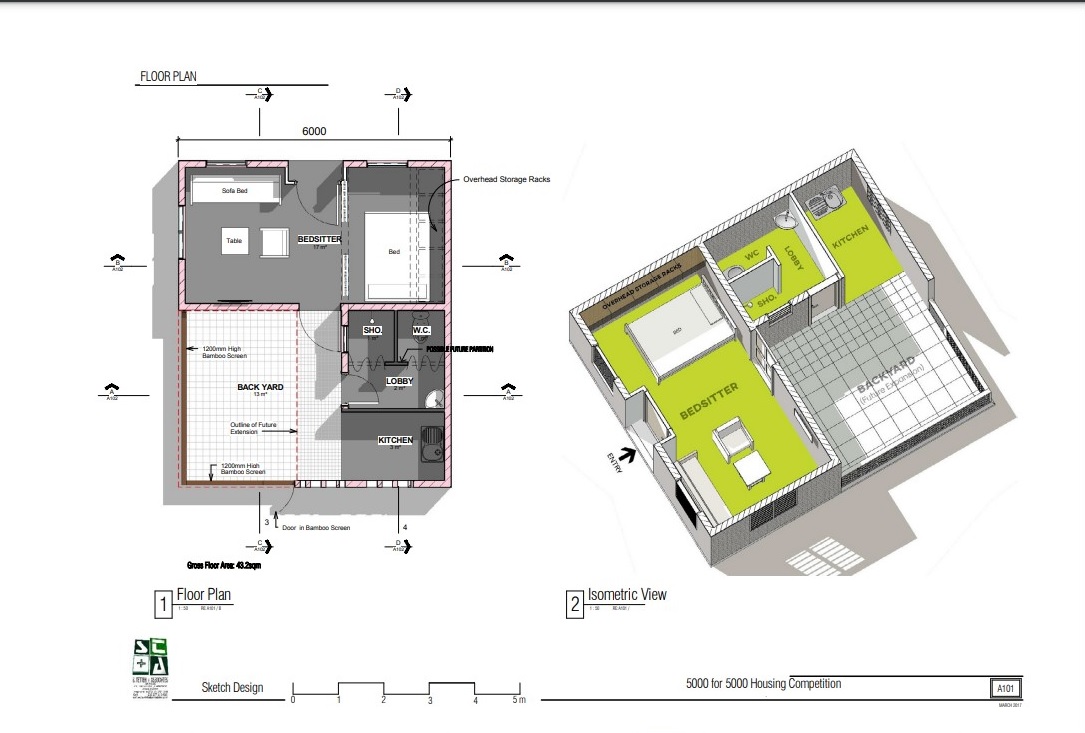 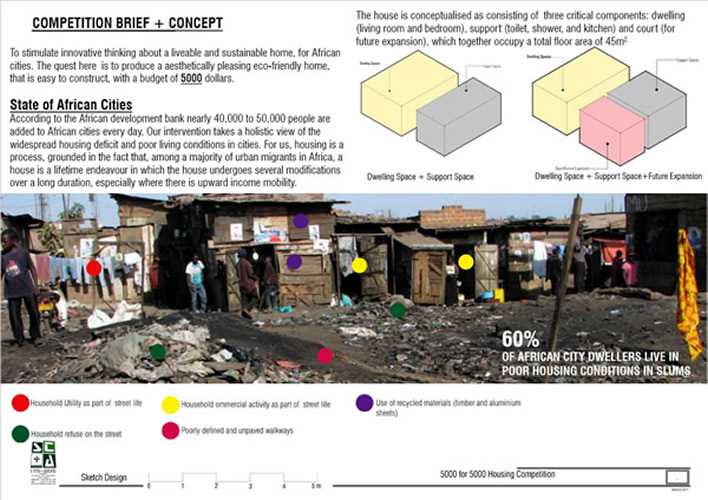  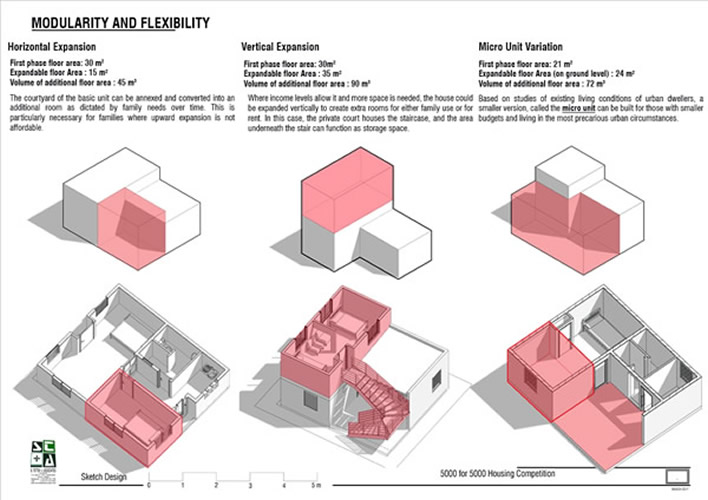 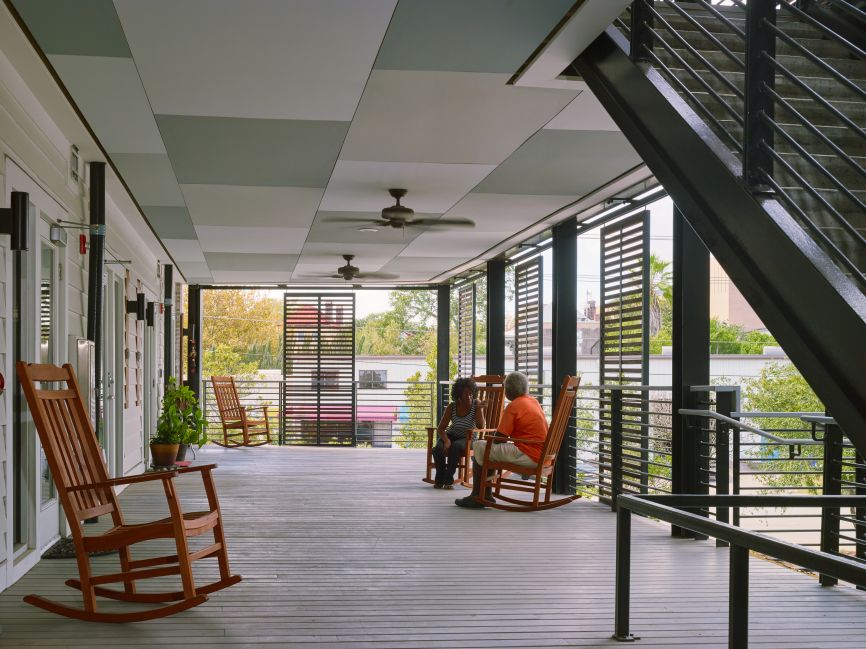 Williams Terrace, Charleston, South Carolina, U.S.A., Architect of Record, McMillan Pazdan Smith Architecture, Spartanburg, South Carolina, U.S.A. /Design Architect, David Baker Architect, San Francisco, California, U.S.A., 2017. "Williams Terrace won the 2019 American Institute of Architects/Housing and Urban Development Secretary's Housing and Community Design Award for Excellence in Affordable Housing Design. This singular nation-wide award recognizes architecture that demonstrates overall excellence in terms of design in response to both the needs and constraints of affordable housing... Wide porches that double as circulation offer places to sit, meet in passing, and personalize a bit of outdoor space." (See: https://www.dbarchitect.com/project_detail/176/Williams%20Terrace%20.html) Photo credit: Chris Luker from DBArchitect.com.
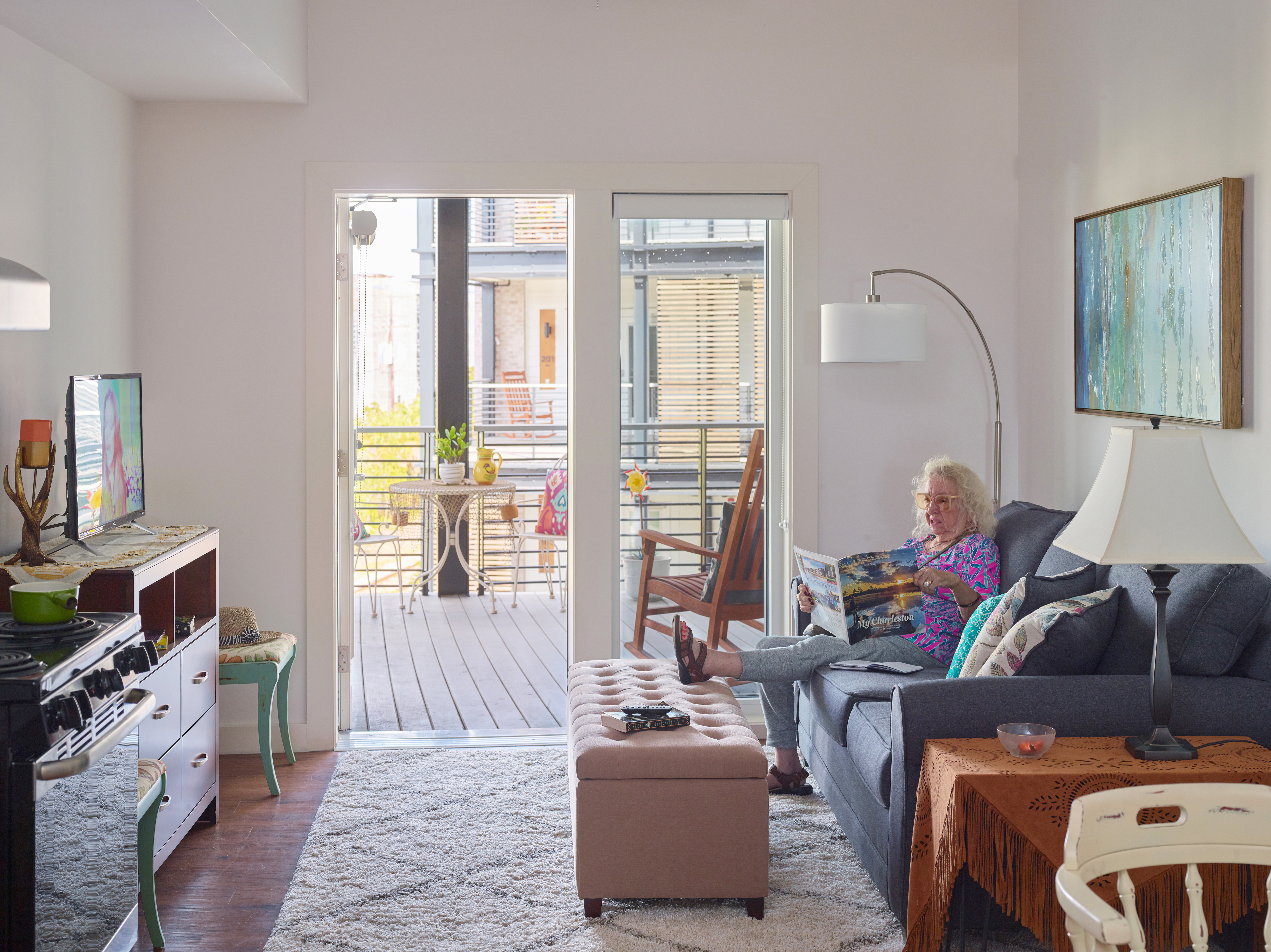 Williams Terrace, Charleston, South Carolina, U.S.A., Architect of Record, McMillan Pazdan Smith Architecture, Spartanburg, South Carolina, U.S.A. /Design Architect, David Baker Architect, San Francisco, California, U.S.A., 2017. "The design team worked closely with the Housing Authority of the City of Charleston to create a dynamic building that meets the challenges of the site—located in a high-velocity flood zone—and respects the gracious built fabric of downtown historic Charleston... Apartments connect to the wide circulation porches, which have room for some personal touches." (See: https://www.dbarchitect.com/project_detail/176/Williams%20Terrace%20.html) Photo credit: Chris Luker from DBArchitect.com.
 Vindmøllebakken, 40-unit cohousing project, Stavanger, Norway, 2019. Designed by founding architects Siv Helene Stangeland and Reinhard Kropf of Norwegian firm Helen & Hard. The architects now live in Vindmøllebakken. Photo credit: Minna Soujoki Langbord/Courtesy of Helen & Hard via Editon.CNN.com
 Vindmøllebakken, 40-unit cohousing project, Stavanger, Norway, 2019. In addition to Vindmøllebakken (see previous slide), Helen & Hard are reported to having five other cohousing projects in the works. Photo credit: Sindre Ellingsen/Courtesy of Helen & Hard via Edition.CNN.com
 Easter Hill Village, Richmond, U.S.A., 1954. Demolished, 2004. "It was the most significant public effort to provide affordable permanent housing for many families displaced by demolition of temporary World War II housing. It was the first multi-unit residential development to combine the twin themes of the planned unit development with the individuation of units... and the care given to integrating a multi-unit residential development to its site." Historic American Buildings Survey, Library of Congress, U.S.A. (See: https://www.loc.gov/item/ca3350/)
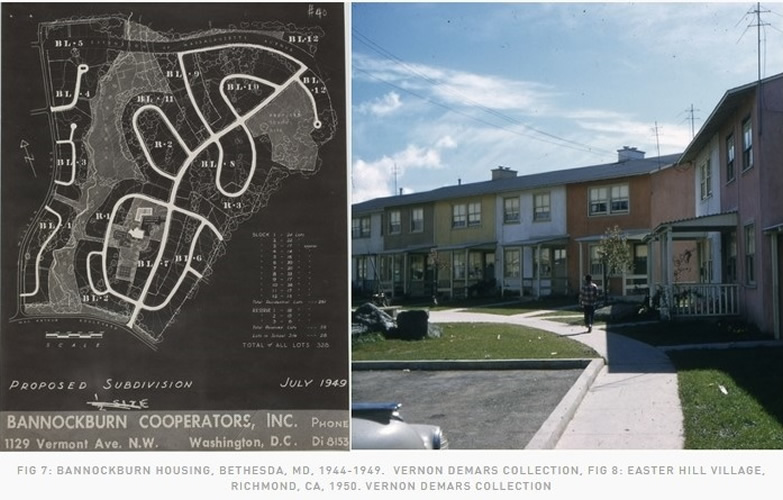 Richmond Village (formerly Easter Hill Village - see previous slide), California, U.S.A., 2008. "The goal for the …Richmond Village project was to turn 300 units of crime-ridden, run-down public housing into a vital neighborhood anchored by a community center and public open space. The development was originally built in 1954 and was a model of public housing until neglect, crime and poverty took over. The Richmond Housing Authority together with Richmond Village…residents collaborated to re-construct a vision of community. The vision included open/community space with mixed-income housing; 100% of the rental housing is affordable, with 70% allocated for public housing residents. The for-sale family homes have a mix of low, moderate and market-rate housing." (See: https://www.nibbi.com/projects/richmond-village/)
|
|

